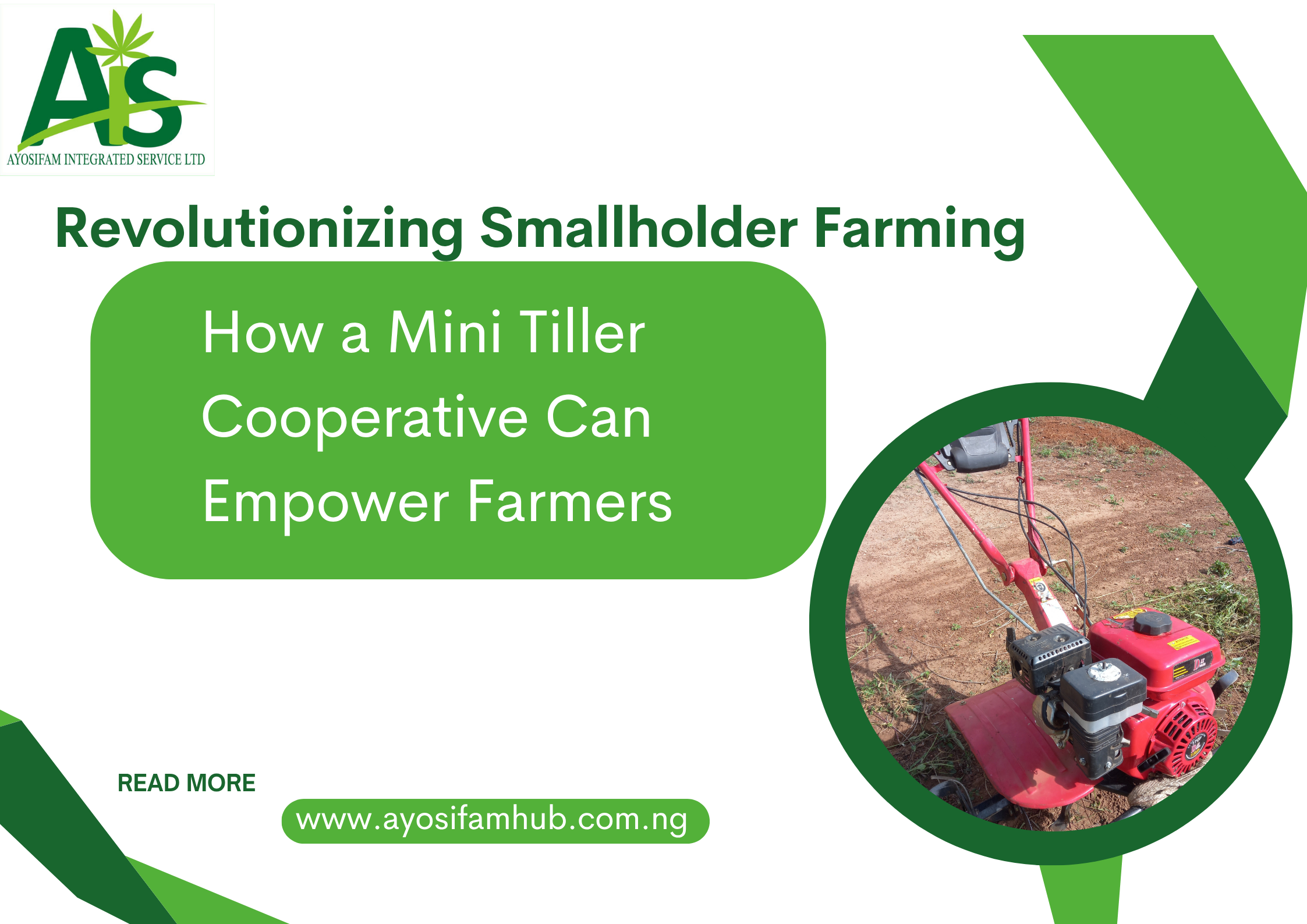For generations, smallholder farmers have been the backbone of Nigeria’s agricultural landscape, their tireless efforts providing food for our communities. Yet, the sheer physical demands of land preparation, particularly for staple crops like cassava and potato, often limit their productivity and potential. But what if there were a way to significantly reduce this arduous labour, making farming more efficient and profitable?
The answer lies in embracing a powerful, yet accessible, piece of technology: the mini machine tiller. And even better, smallholder farmers in a community can unlock their potential by coming together as a cooperative.
The Mini Machine Tiller: A Game Changer for Labour Reduction
Imagine the scene: instead of spending days breaking tough community soil with hoes and cutlasses, a farmer guides a compact machine that effortlessly churns and softens the earth in a fraction of the time. This is the power of the mini machine tiller. It’s not just a helper; it’s a genuine replacement for much of the manual labor involved in initial land preparation.
Here’s why this is so transformative for crops like cassava and potato:
A. Softening the Soil for Direct Planting: A common misconception is that cassava and potato always require elaborate “hips” or mounds for cultivation. While mounding can be beneficial in certain community soil conditions or for specific varieties, it’s often a necessity born from the inability to adequately soften the land manually. With a mini machine tiller, the soil can be thoroughly tilled and loosened, creating an ideal seedbed for direct planting without the need for extensive ridging. This dramatically cuts down on one of the most labour-intensive aspects of cultivation.
B. Reduced Effort for Hipping (When Needed): Even in cases where hips are still preferred or necessary – perhaps for improved drainage in certain community areas or specific potato varieties – the mini tiller drastically reduces the effort. Once the land is softened by the machine, forming hips becomes a far less arduous task, requiring significantly less manual exertion than working with compacted soil.
B. Faster Turnaround Times: Less labour means faster land preparation. This efficiency can allow farmers to plant earlier, potentially accommodate multiple cropping cycles, and react more swiftly to favourable weather conditions in community.
C. Empowering Farmers: By alleviating the back-breaking work, farmers can dedicate their energy to other critical aspects of farming, such as pest management, fertilization, and marketing, ultimately leading to better yields and increased income.
The Power of Cooperation: 10 Farmers, 1 Tiller
While the benefits of a mini tiller are clear, the cost can be a barrier for individual smallholder farmers in community. This is where the cooperative model shines. Imagine 10 smallholder farmers in a community pooling their resources to collectively purchase a single mini machine tiller. This approach offers numerous advantages:
A. Affordability: The cost, which might be prohibitive for one farmer, becomes manageable when shared among ten.
B. Optimized Usage: A single tiller, when managed effectively, can serve the needs of multiple farmers throughout the planting seasons, ensuring the asset is continuously utilized and provides maximum return on investment for the community.
C. Shared Knowledge and Skills: Farmers can learn from each other on how to operate and maintain the machine, fostering a sense of community and mutual support.
D. Collective Bargaining Power: A cooperative can also gain better access to spare parts, fuel, and even training programs for operating and maintaining the equipment.
Making it Happen
For this cooperative model to thrive, a few key considerations are important:
A, Clear Management and Scheduling: The cooperative will need a robust system for scheduling the tiller’s use among its members to ensure fairness and avoid conflicts.
B, Maintenance Fund: Establishing a collective fund for routine maintenance and unexpected repairs will be crucial for the longevity of the machine.
C, Training: Ensuring all members who will operate the tiller receive proper training on its safe and efficient use is paramount.
The mini machine tiller, especially when acquired through a cooperative, represents a significant step forward for smallholder farmers . It’s an investment not just in machinery, but in the future of farming – making it less burdensome, more productive, and ultimately, more prosperous for our dedicated farmers. Let’s embrace this opportunity to cultivate a better tomorrow.




